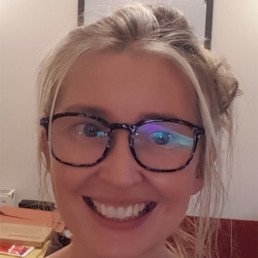
Written by Angel Hinkley
Mathematics Teacher & facilitator of the Anti-Racism Society at Drumchapel High School.
In the midst of the ongoing Israel-Palestine conflict, a silence pervades many educational spaces. As a facilitator of an anti-racism club at my school, I’ve witnessed firsthand the impact of this silence. Young minds, already vulnerable to the nuances of prejudice and discrimination, now grapple with the weight of divisive rhetoric surrounding the Israel-Palestine conflict. They perceive this silence as implicit approval of ongoing injustices, further deepening their sense of injustice and helplessness.
The reluctance of educators to delve into the Israel-Palestine conflict is understandable. The daunting prospect of navigating this politically and emotionally charged topic—compounded by the fear of inciting controversy or inadvertently projecting personal biases—often leads to a preference for silence. However, this silence is more harmful than engaging with the complexity of the conflict. Within this complexity lie the most profound lessons of humanity, empathy, and critical thinking. By choosing silence, we fail our young people, perpetuating ignorance and apathy in the face of suffering and injustice. To combat this, as educators we should acknowledge and understand our own biases, being transparent about them with our pupils, fostering an environment that encourages insightful conversations, thereby promoting critical thinking, understanding, and unity.
Recognising the need to break this silence, I embarked on creating a resource that could serve as a bridge to support educators. This resource is the result of deep reflection, where every word and every activity were meticulously crafted to promote love over hate, encouraging pupils to think critically. At the core of this resource is the work of Banksy, an artist known for using his art as a form of activism. Banksy’s pieces provide a unique perspective on the conflict, blending political and social commentary with powerful visual storytelling. This approach offers young people a unique lens through which to engage with the complexities of the Israel-Palestine situation, challenging their preconceptions and encouraging them to confront injustices and connect with the human stories at the heart of the conflict.
PSE teachers warmly welcomed this resource, and a defining moment for me was during a school assembly when the resource was showcased on the “Respectful” slide, aligning perfectly with our core values of being Ready, Respectful, and Safe, signifying the end of silence. This moment filled me with hope for the potential to effect change, but it also served as a reminder that our work is far from over. Breaking the silence is an ongoing journey that requires continued effort and commitment. Together, we can amplify unheard voices, challenge perspectives, and build bridges of understanding, paving the way for a future rooted in empathy, justice, and peace.
In the heart of every educational journey lies the potential to shape a more just and empathetic world. Breaking the silence surrounding the Israel-Palestine conflict is not just an educational imperative; it’s a moral one. As educators, it’s our responsibility to equip our young people with the knowledge, skills, and empathy they need to navigate the complexities of our world and to advocate for a more just and peaceful future.
I am immensely grateful to my Education Scotland Building Racial Literacy colleagues and Jehan Al-Azzawi for their invaluable feedback and support in refining this resource. Their input ensured its accuracy and effectiveness in fostering meaningful discussions within the classroom.
Here is the link to the Israel-Palestine resource


This is really clear – and so generous of you to share. Thank you!